
The cozy South Chicago Art Center is nestled in a mostly low-income Chicano and Black neighborhood on the city’s Southeast Side. It’s across from a bilingual Catholic church and down the street from dollar stores and taco joints, where the toxic remnants of nearby closed steel mills still waft in the air.
It was a perfect ground zero for a workshop that used the healing power of percussion music and spoken word that helps students improve their musical skill level and self-esteem. The teaching-artists emphasized these two goals. They felt new musical skill could help the students’ education and boost their self-esteem.
On the first day, June 24, the inside of this bright, creative work-play space was rearranged in a kid-friendly learning environment associated with Italian education theorist Reggio Emilia’s atelier. High-tech learning tools, including cameras, computers, musical instruments and art supplies, set students on the path to directing their own education creatively. Stan West and Luther Gray, the teaching-artists, were set to go.
A hand-written sign on the wall proclaimed this place a sanctuary, set apart from the “343 slain” Chicago schoolchildren and handgun violence. Visually stunning but quiet, it’s a safe place to learn.
And learn they did. The teaching methods include two robust, theoretical constructs – Western Aesthetics, which examines the beauty of an art product like percussion music; and Black aesthetics, which looks at how beautiful the community becomes by the production of the art object like Afro-Cuban beats.
Western Aesthetics is based on the work of an individual using “art for art’s sake” model. It has a rich history and can also promote social justice issues and folk traditions. It centers on an artist’s creative freedom that’s tempered only by the mercurial marketplace and the public’s changing tastes. Our approach shares the Encyclopedia Britannica’s definition of Western Aesthetics with learners. It deals not only with the nature and value of the arts but also with those responses to natural objects that find expression in the language of the beautiful and the ugly.
The Black Aesthetic is a collective approach that puts social change in a community context, as described in the Urban Dictionary’s definition of Black aesthetics. The Black Aesthetic is the result of Afro-American desire for self-determination and nationhood that resurfaced in the form of artistic expression in the 1960s. It is unified in its embrace of all members of the African diaspora, although also characterized by varying rhetoric among poets of the Black Arts project. Nonetheless, the Black Aesthetic serves as a corrective means to help black people out of polluted mainstream.
Among theoreticians of Black aesthetics like Henry Louis Gates, Angela Davis, Houston Baker and bell hooks, is Addison Gayle Jr. who edited the classic 1971 The Black Aesthetic and notes:
The question for the black critic today is not how beautiful is a melody, a play, a poem, or a novel, but how much more beautiful has the poem, melody, play, or novel made the life of a single black man (woman)? How far has the work going in transforming an American Negro into an African-American or black man (woman)? The Black Aesthetic, then, as conceived by this writer, is a corrective – a means of helping black people out of a polluted mainstream of Americanism, and offering logical, reasoned arguments as to why he (she) should not design to join the ranks of Norman Mailer or a William Styron. (xxiii)
Both theories chronicled artistic process and product. And both were appropriate to use for a project that linked post-colonial New Orleans music, Chicago sounds via traditional instruments and 21st century technology. For the two bi-cultural, tightrope-walking teaching-artists, it was not an either/or situation where you have to choose between the often competing theories. They used both approaches, knowing that the students of color (and ourselves) were fluent in dominant ideological culture (Western Aesthetics) and subordinate ideological culture (Black/Latino/Post-colonial Aesthetics).
The aim was to deconstruct them both a bit, while simultaneously teaching art to grade school kids. We know there’s several different streams of Western Aesthetics and Black Aesthetics. Here’s ours:
We recognized that while our rather simplistic view of Western Aesthetics and Black Aesthetics was devoid of some of the layered historical, socio-political, artistic and literary philosophies, that we’d gladly detail for other discourse communities. That said, we did think our slimmed-down definitions were age-appropriate. We admitted that our working definitions for young art students barely mentioned some of the more contemporary examples of Black aesthetics in their Windy City worlds. That’s why we listened closely to our kids’ comments.
“Oh, I get it,” said Leila. “One way says making cute music makes us pretty. The other way says making cute music makes our neighborhood pretty.” Simply, but eloquently, stated.
Stan West is self-described as a scrubby scribe who teaches, rather than a full-time artist.
“Maybe, I’m afflicted with the same self-esteem and internalized racism issues that many (though not all creative communicators in marginalized communities of color) might also feel,” he said.
“For some of us, we’re told that our “outsider art” is not as good as others’ “insider art” unless we use a dominant ideological yardstick to measure ourselves from, as opposed to evaluative tools we create for ourselves. Luther Gray and I created our own,” said West.
But, West is recognized as an artist by local organizations, like the Ernest Hemingway Foundation of Oak Park and River Forest, Oak Park International Film Festival and Columbia College’s Columbia Links.
The Ashé Cultural Arts Center of New Orleans curriculum features self-esteem building “healing music” instruction via drums and spoken word as a way to help them feel better about themselves, and connect their new artistic skill and prowess with other community members for their enjoyment and enrichment.
One bilingual student, Leila, delights in how Gray set up a video conference where the art center’s camera projects her in the big screen. The self-described “actress-and-model-to-be” lived up to all of her Hollywood potential. Leila, one of a dozen artistic-scholars under 11, posed and explained to Gray in Spanish what the workshop’s theme would be.
“‘Mucho voces, un latido del corazón’ is how I’d translate our theme,” Leila said.

And so it became “many voices, one heartbeat” for the week.
Using large drums hit with sticks to create a “heartbeat” and another large drum tapped with fingers, a dozen students like Cierra and Aiden took turns at a variety of percussive instruments to learn African rhythms and Bamboula “umbrella” dances.
They created “the beats of Chicago” that included hip-hop adaptations from rappers Chief Keef and Kanye West — youthful examples of Chicago’s new Black Aesthetics. They taught the teachers urban music, and were taught about rural African music.
Counting out beats was a pathway to math, used to figure out quarter notes, half notes, syncopated notes and more. The students taught the history of South Chicago’s culture, and the hybrid showed mutual respect for different forms and content of percussion music and the utility of both aesthetic theories.
An older student quickly captured the mathematical concept of beat-keeping, becoming the main rhythm drummer using the large African drum you hit with sticks to keep the “heartbeat.”
“I’m good at this,” she said.
The skill level improved as Gray discussed the cultural context by inviting students to mimic the “umbrella” dance of the syncopated the Bamboula sound of New Orleans into a jamming session.
“Umbrellas are used in New Orleans funerals to say, ‘I’m sorry you’re gone, but it was a joy to know you’,” he said.
Some danced while others played. All switched roles. Leila overjoyed in how the African and New Orleans beats were strikingly similar to Mexican, Puerto Rican, Cuban, Dominican and Nigerian rhythms heard daily in her globally diverse neighborhood. Leila’s point was echoed by Art Center program director Tasha Robinson, a Wolof and French speaker who spent two years in the Peace Corps as a teaching artist in Senegal where the rhythms were quite similar to those learned and played by Art Center students. The Art Center put a minute of it on their Facebook page website.
Here’s two parallel narratives shared by Gray and I during Day 2 of the workshop.
“When I was a kid growing up on Chicago’s South Side some gangbangers came to our neighborhood and threatened one of my friends,” Gray said. “We pushed back as did they. For several weeks, I put myself into self-imposed exile to prevent becoming a casualty of the streets since thugs were definitely looking for me. I learned to play drums inside my house while voraciously reading books on African culture. I believe it saved me. Maybe it could save you.”
I added: “I was a tagger. I used to write political graffiti on the alley walls near Luther’s house. One day, a policeman caught me with a spray can in my hand. Startled, I jumped real high. It must have amused him because smiling, he told me, ‘Put that can down or I’m arresting you.’ I dropped the can, and later picked up a pen. I guess you can say I’m still writing on the wall, but in a more socially acceptable way. Maybe you will, too.” Students giggled.
Given New Orleans’ “Mother’s Day Massacre” and Chicago’s “Memorial Day Murders” where innocent youth in both locations were victimized by random gang gunfire, the sense of urgency made Gray’s proposal so timely.
‘Luther Gray’s project might have helped facilitate social change and create beauty,’ I keep telling myself as I assess student quotes, art administrator’s thoughts, and my New Orleans-based copy-editor’s comments where she is grappling with a bullet-ridden environment and a cash-strapped school system that mirrors my own here.
The increasing violence in both cities is staggering.
On July 7, The Tribune ran a story saying in the first six months in Chicago; at least 1000 people had been wounded or killed. My Columbia Links journalism students published an investigative report, “Don’t Shoot: I Want to Grow Up” where one teen writer described Chicago as “Chi-Raq,” given the startling statistic that more youth have been killed in our city than armed U.S. soldiers in Iraq and Afghanistan.
Rather than wringing our hands, we’re trying something.
The rubber met the road with community groups like the South Chicago Art Center headed by founder Sarah Ward and program director Tasha Robinson. The healing theme to our city’s ailing violence epidemic “hit a chord,” Ward said. She also loved the musicality of the project. According to Ward, the Art Center is primarily a visual art space, which is why she loved how with drums. We were challenging the Center and its students outside of their comfort zones.
The healing and self-esteem workshop teaching goals might seem a bit oblique to some, but not to drummer Luther Gray, a tall, sinewy, gray-haired man with two University of Wisconsin degrees. He gave up a steady corporate job to study percussion in Ghana, Benin, Togo, South Africa and Martinique as a way to tap into what African-American poets call “the collective unconscious of the Black experience.”
To him, “drums of peace” is part of the restorative justice of centuries of human rights abuses against people of color and a way to restore peace to restless spirits. He’s also been the primary activist behind keeping and maintaining Louis Armstrong Park’s “Congo Square,” a sacred place where historians say Houmas Indians came far to pray, before White slave masters decided to trot out Blacks and Biracials, selling them into slavery by demanding they dance to drummers’ Bamboula beats from the Congo. This later morphed into the “second line” now heard in jazz funerals – a point Gray mentioned to Art Center students in giving historical context to the new beats they learned and mastered.
Gray appeared often on HBO’s “Treme” where he’s seen playing congas to the syncopated Bamboula beat associated with the “Sound of New Orleans.” Treme, the 6th Ward, is the United States’ oldest Black/Biracial community. It’s where many of the Krewe of Zulu — the century-old Black/Indian Mardi Gras contingent — comes from. The Treme symbolizes Black pride and life force sustainability associated with the Ashé Cultural Center, which is down the road in the Central City. Ashé is a Yoruba word meaning “Amen.” Gray is a board member.
In May 2008, Gray and I were Crossroads Institute of the Arts Fellows at Xavier University. Additionally, we spent a couple days doing arts integration at New Orleans Charter School for Math and Science. We later worked together via long distance, where my high school students at Columbia’s Saturday Scholars Program used arts integration to create a handmade craft book with pen and ink letters my students wrote to Brother Martin High School students in New Orleans. It included my sons – Amman and Jordan — writing to his sons — Jalen and Jamon.
In 2007, with his help, I created a “post-Katrina curriculum” at Columbia College Chicago’s (a weekend college prep program) “Saturday Scholars” that included Chicago teens writing letters to the editor and presenting them in person to New Orleans policymakers that summer.
They received favorable response from Loyola University’s Law School, where students shot footage, and from New Orleans journalists.
Even though he’s my childhood friend whom I tease the way best friends do, I know Gray is a visionary. He’s a change agent more so than me. This was evidenced by the quick turnaround of Art Center students and the richness of their cultural musical products in four days.
He’s taught more than 50,000 other students “healing music.”
New Orleans was connected to this Chicago-based teaching artist collaboration via technology. Spoken word artist Frederick “Hollywood” Delahoussaye coordinated and monitored an exchange between Chicago youth and New Orleans youth through the use of video conferencing technology. Ashé also utilized this technology in an ongoing exchange with La Mama in New York City. The introduction allowed them to share their life experiences and information about their communities.
Over four days, Gray worked with the Chicago youth to develop creative works: drumming and spoken word. At the same time, Delahoussaye worked with the youth in New Orleans to develop creative works: drumming and spoken word.
On the fourth day, the culminating exchange allowed the youth of both regions, via technology, the opportunity to simultaneously share creative works they have produced during the residency.
Let’s be clear about what we were teaching. This bilingual musical and spoken word exchange on the third and fourth day allowed the youth and teaching artists of both regions to explore a larger connection to community, that they are needed, valued, and have something to offer–that they are part of something larger than personal struggle.
Related to that was a visit on the third day to Buddy Guy’s blues club across from Columbia. Here, at the Louisiana guitarist’s nightspot, students heard professionals play regional music. The impact of bringing Art Center students to Columbia two days in a row to their higher learning dreams was huge.
Now, college seems more likely.
“I feel like I learned a lot this week,” said Leila at Columbia. “Now I can drum, rap, do the umbrella dance, and maybe even go to a cool college like this one. Wow!”
“Wow” is how I also felt as I facilitated a late June performance and panel though the school’s Television Department. TV students and staff from “Culture, Race and Media” also assisted. The most important Columbia person was TV Department coordinator Laura Levitt-Gamis, who fought to get us space for two days downtown to do the videoconferencing.
This workshop was assessed using Ashé’s Evaluation Form with input from Columbia’s TV Department and Center for Community Arts Partnership. This gave the youth and artists that attended the community exchange performance from both regions opportunities to gauge the project’s overall effectiveness.
And while preliminary results from this forum did not reveal much more than did the anecdotal evidence, it did confirm that students felt better about themselves after Gray’s workshop than they did before it.
In just four days, they created a song with original Spanish and English lyrics with drum beats and performed that piece with New Orleans youth who performed a similar song. They learned and re-learned that all of us should be proud of the skin we’re in.
They learned Afro-Cuban drumming. They learned about New Orleans. They learned youth there are suffering and coping with the same things they are here. They learned about New Orleans and Buddy Guy’s blues club. One student said it was her “first visit downtown.”
They learned that that two bi-cultural, bilingual teaching-artists successfully emerged from their same marginalized neighborhoods. They learned a little about Western Aesthetics and Black Aesthetics. They learned how to create beauty with verse, sound and movement. They learned that this enriched their neighborhood.
[pullquote]And while that may not save them from the big bad wolf out there, it may save them some pain. We feel we helped facilitate change. To us, that’s a positive result.[/pullquote]
“All the youth in this project were those who experienced effects from living in under-served, marginalized places, still recovering from historical trauma,” Gray said. “Our daily instruction at the Art Center and at Columbia focused on how to use drums to heal pain.”
When at-risk, marginalized communities are further impacted by natural disaster and the consequences of systemic collateral damage of racism and poverty, they become communities in trauma, experts report.
Stunning and hopeful research evidences that individuals recovering from trauma (physical, emotional, sexual assaults, critical loss and grief) show significantly higher resiliency and recovery when they are: allowed to process and frame their experiences using their own voices and preferred ways of expression; presented with a sense of community–that they are needed, valued, and have something to offer–that they are part of something larger than personal struggle; able to re-frame their experiences of trauma from self-harming thoughts and isolation (low self-esteem, dissociation and numbness, self-destructive actions) to being intrinsically motivated to move beyond victim/survivor to gatekeeper of truth and history.
“Many Voices-One Heartbeat” used drumming, spoken word and video conferencing technology to provide youth living in traumatized communities access to these opportunities, said Ashé’s Executive Director Carol Bebelle, who arrived in Chicago on the final performance day. She later met with the National Museum of Mexican Art, Black Pearl and the Black Cinema House to set up similar workshops with these Latino and African-American arts organizations in October given the positive buzz generated from our artistic encounter with grade school, artist-scholars.
Our arts integration collaborations have a consistent history.
Columbia students and Chicago high school students visited New Orleans in 2007 and 2008 to help rebuild it. They shot footage of the process discussing how much they received by giving. Each time, they met with Gray who has appeared in two student-produced documentaries. Both works included spoken word and dance. These docs were screened at film festivals, academic conferences and schools.
This time, Gray shot much of the video footage of our teaching. Betty Jackson, a Columbia film grad, Columbia Arts and Media Management student Cassie Brucci contributed still photos as did I and Jackson. Columbia Film grad, Bryan Cosgriff edited it after doing a rather extensive “film log.”
The doc is slated to be shared on websites at Ashé, South Chicago Art Center, Columbia and the Oak Park International Film Festival, where it’s scheduled to be featured Sept.14, 2013, at the Oak Park Public Library. That documentary will put a human face on the healing music project of two bi-cultural teaching artists who dialectically danced across the theoretical tightrope of Western and Black Aesthetics. It will showcase Cierra, Aiden, Leila and others’ openness to learn new artistic skills and use them. And we did so by addressing self-esteem through drumming rudiments.
I think about that a lot as I stand here outside of the Center. I think about how I witnessed a transformation of students who at the beginning of the week did not know they had any musical talent, but now at week’s end knew they did.
I think about how we saw the same kind of transformation with spoken word and dance, too. Kids were not confident in those genres, but now smile knowing they rock. They enjoyed creating beautiful music in their sometimes blighted neighborhood, and relished that curious community members peeped in at hearing the soulful sounds blaring out of the cozy Center’s front door.
Glancing at the “343 slain” sign, I reflect on that wild, wacky week that slowly began with timid students opening up to playing drums, “spittin’ raps” and dancing with umbrellas with their New Orleans counterparts via Skype. That pedagogical vision was part of our teaching practice . That vision predicted healing music might soothe psychic pain while simultaneously providing rudimentary drumming skills.
It made beautiful music that made this part of South Chicago more beautiful. It embraced the similarities and differences of Western and Black Aesthetics in ways we thought made perfect sense for our brilliant students here and there. I recall how Gray said The Crescent City to Windy City Cultural Connection began with King Oliver and Louis Armstrong used the famous “Spirit of New Orleans” train up north to Chi-Town.
“Since things worked well with our joint venture,” Gray said, glowing with the positive results, “next year, New Orleans youth will take the same train to Chicago with the press on board to help chronicle the journey. The following year, we’ll invite Chicago kids here on the same ‘Spirit of New Orleans’ train to reconnect with their peers.
We’ll let history assess how well our lessons of healing and cultural well-being were learned by students there and here.”


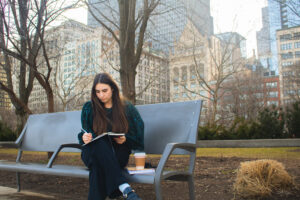
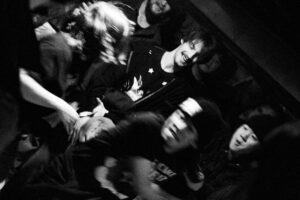
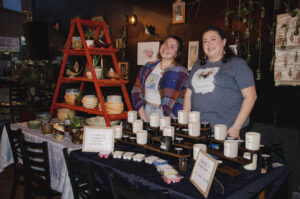
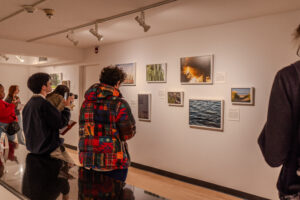
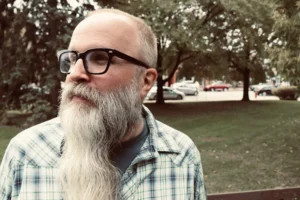





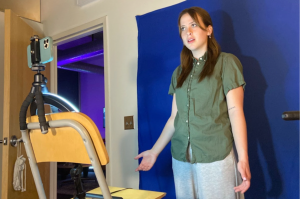
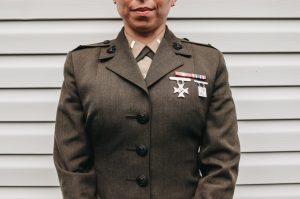


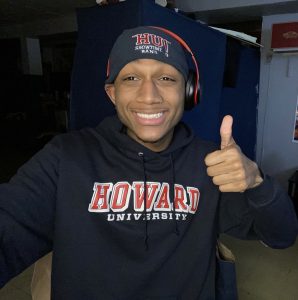
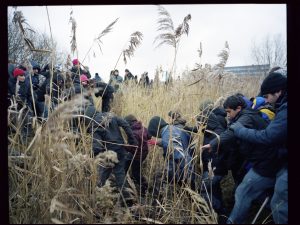

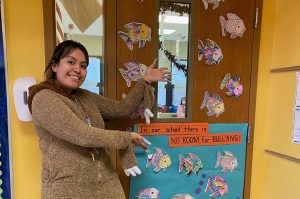
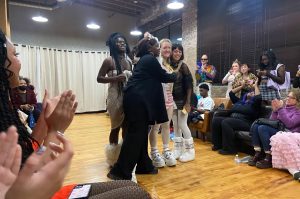
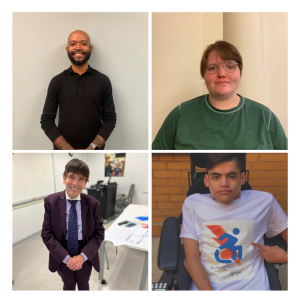
Be First to Comment